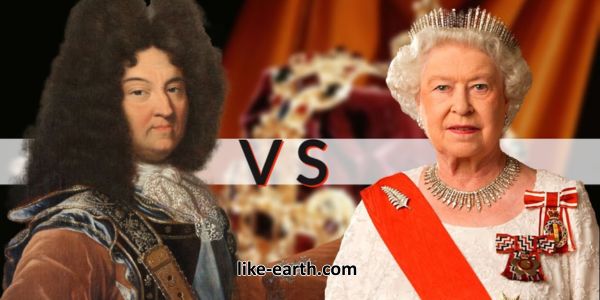Difference Between Constitutional and Absolute Monarchy

Difference between constitutional and absolute monarchy has shaped political systems across the globe for centuries. Understanding this distinction helps us better grasp how governments evolve and function. These two forms of monarchy may share similarities in having a sovereign at the helm, but they differ vastly in power structure, history, and impact on society.
What Is a Monarchy?
A monarchy is a form of governance where a single individual, typically known as a king or queen, rules a nation. Monarchs usually gain power through heredity. However, how much authority they hold can vary dramatically.
Defining Absolute Monarchy
In an absolute monarchy, the monarch holds supreme autocratic authority. This means their power is not limited by laws, constitutions, or opposition. Decisions are made by the ruler alone. The monarch often controls all aspects of governance, including military, legislation, and justice.
Historically, France under Louis XIV and Russia under Peter the Great are prime examples of absolute monarchies. These rulers centralized power to a degree that left no room for citizen representation or legal constraints.
Understanding Constitutional Monarchy
In contrast, a constitutional monarchy operates under a constitution or legal framework. The monarch’s powers are defined and restricted by law. They usually act as ceremonial figureheads. Real political power lies in elected officials, such as a Prime Minister or Parliament.
Modern examples of constitutional monarchies include the United Kingdom, Sweden, and Japan. In these countries, the monarch symbolizes national unity but does not interfere with daily political operations.
Key Differences Between the Two Systems
- Power Source: Absolute monarchs derive authority from tradition and divine right. Constitutional monarchs operate under legal limits.
- Political Involvement: Absolute monarchs actively rule. Constitutional monarchs perform symbolic duties.
- Law-Making: In absolute systems, the ruler makes laws unilaterally. In constitutional systems, legislation comes from a democratic body.
- Citizen Rights: Absolute monarchies often suppress political rights. Constitutional monarchies usually protect civil liberties.
- Succession: Both systems rely on hereditary succession. However, constitutional monarchies may require parliamentary approval.
Historical Evolution
The shift from absolute to constitutional monarchy often came through revolution or reform. For instance, England’s Glorious Revolution of 1688 limited royal authority, leading to the formation of a constitutional framework. France, after years of absolute rule, turned toward democracy following the French Revolution.
Advantages and Disadvantages
Absolute Monarchy Pros:
- Quick decision-making without bureaucracy
- Long-term stability when power is uncontested
- Centralized vision for national development
Cons:
- Suppression of freedoms
- Potential for tyranny
- Lack of checks and balances
Constitutional Monarchy Pros:
- Balance between tradition and democracy
- Protection of civil rights
- Political stability with symbolic unity
Cons:
- Monarch’s role may be seen as outdated
- Public funds used for ceremonial purposes
Modern-Day Examples
Absolute Monarchies: Saudi Arabia and Brunei still practice this form. In these nations, monarchs have sweeping authority over law, religion, and policy.
Constitutional Monarchies: Countries like the Netherlands, Norway, and Canada operate under parliamentary systems where the monarch has no legislative power.
Public Perception and Cultural Impact
Public support for monarchy varies. In constitutional monarchies, many view the royal family as symbols of national identity. In absolute monarchies, citizens may have less freedom to express dissent. Media coverage, traditions, and ceremonies all influence how monarchs are perceived globally.
Conclusion
The difference between constitutional and absolute monarchy reveals how nations adapt traditional systems to modern needs. While absolute monarchy is rooted in historical dominance, constitutional monarchy blends tradition with democratic values. Understanding both helps citizens appreciate their political heritage and contribute to informed discussions on governance.
Further Reading
Explore more about monarchy systems and political evolution on our main site: Like Earth.
Stay Connected
Join the conversation and get real-time updates on monarchy news through our official WhatsApp channel: Royal Insights Channel.



